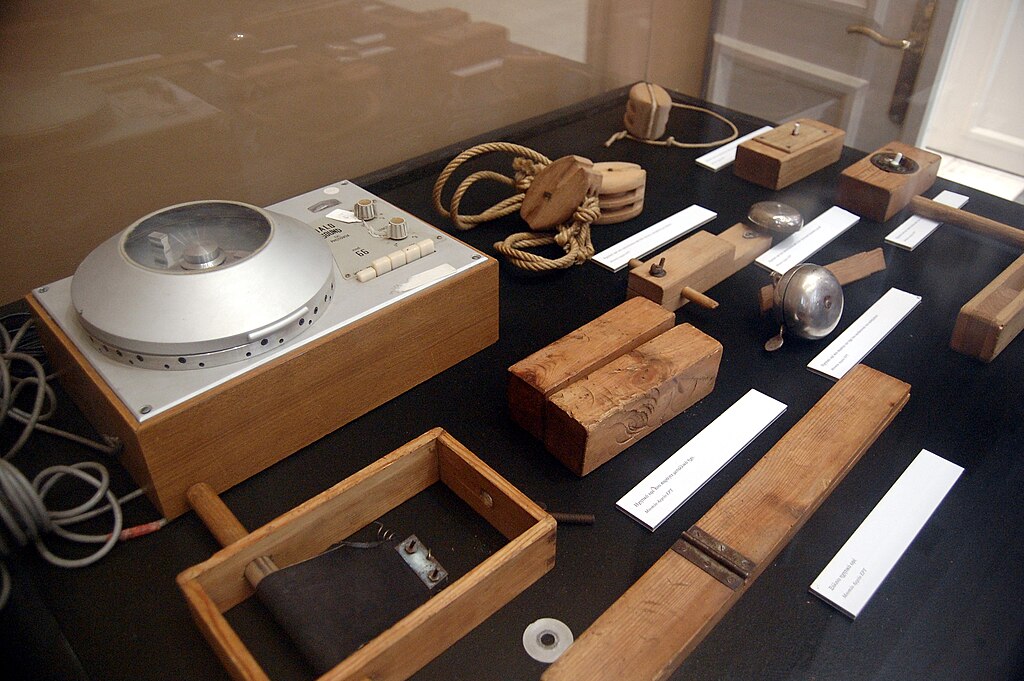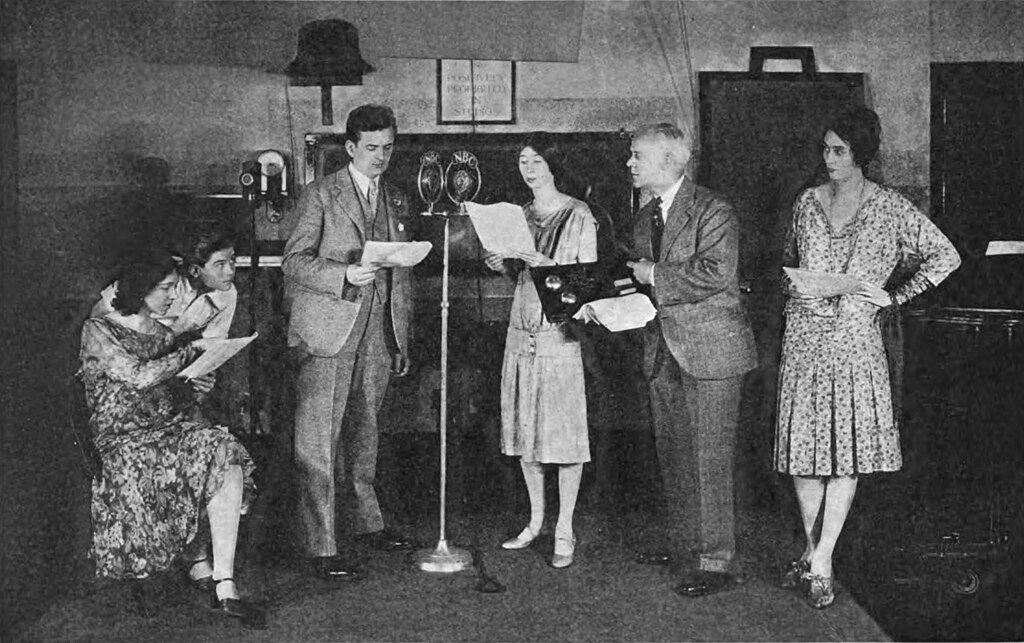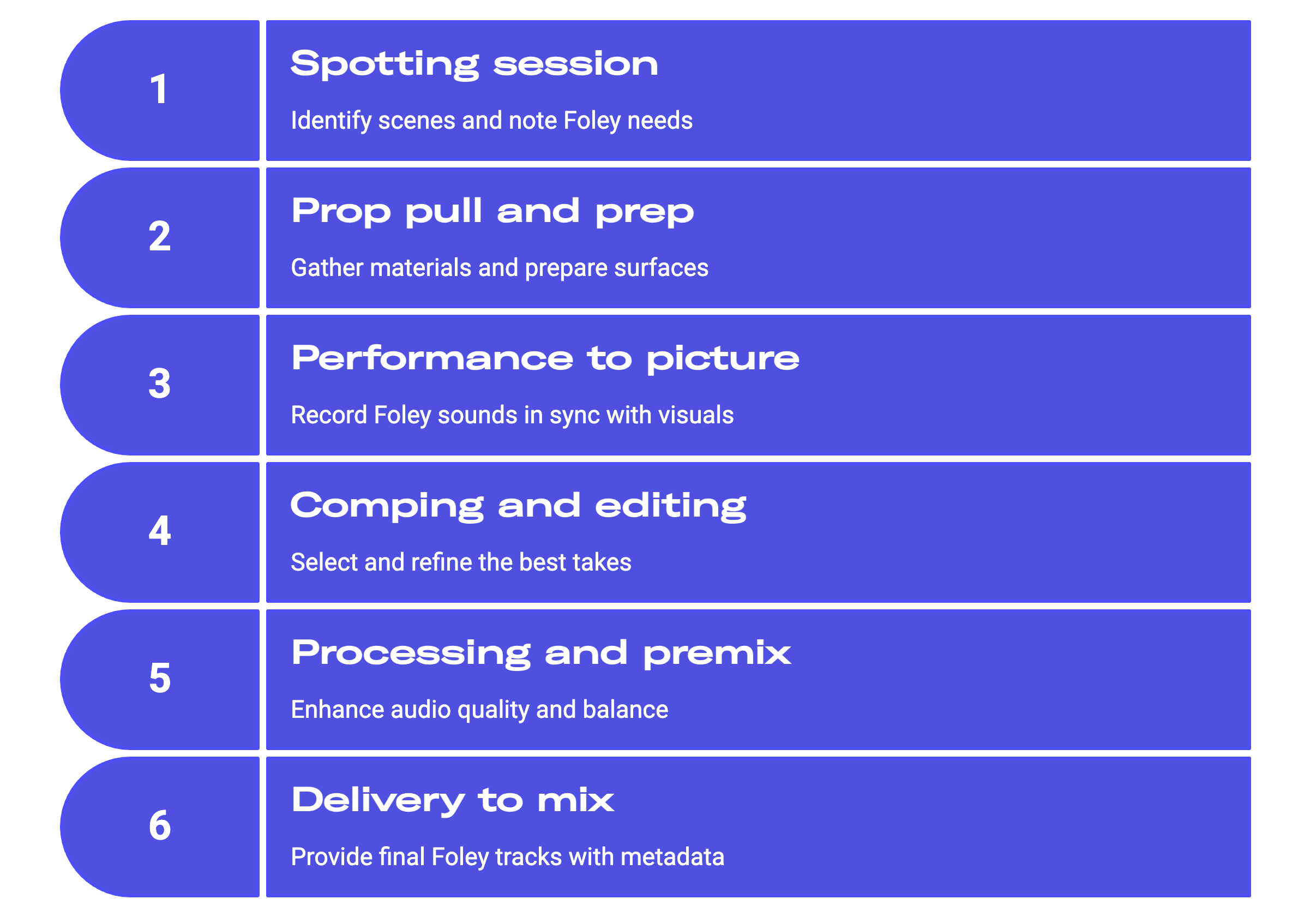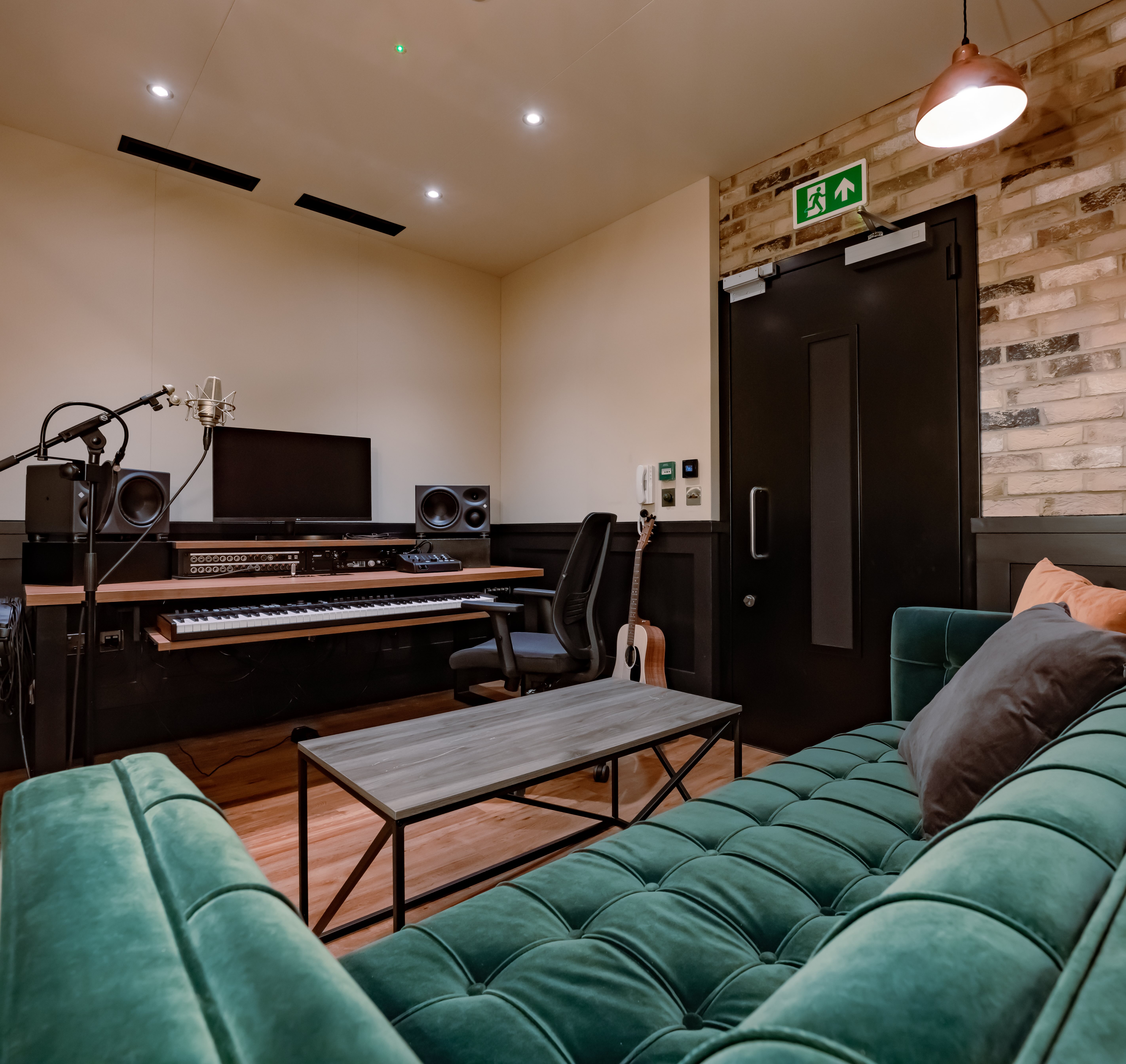What Is Foley? Guide to Foley Sound Effects & Process
Your go-to guide to audio post-production. Learn the core principles of Foley across process, sessions, foley pits, deliverables, budgets, pitfalls, and more.
Foley Sound: Complete Guide for Film, TV & Games
Foley is the audio post-production performance of everyday sounds, performed live to picture. Named for Jack Foley, it underpins film, TV, games and animation. Blended with production sound, library sound effects and sound design, it helps enhance audio quality while keeping the story clear.
By the end of this guide, you will know the Foley process from start to finish. You will learn how to brief, schedule, and deliver Foley without fuss. The guide also teaches you to record sound effects that fit the balance and enhance audio quality.
Key takeaways
- Foley artists perform footsteps, clothing and object moves in sync so characters feel present.
- Foley complements production sound, library sound effects and sound design.
- A well tuned Foley stage, reliable items and tidy editing protect audio quality and the final balance.
- Clear specs, naming and stems speed the audio post production process from first pass to final mix.
- Full stage foley is not available at TYX. Light foley is offered in house, plus ADR and Dolby Atmos services.
Foley vs. sound effects editing and sound design
Foley: Artists perform footsteps, cloth, and prop sounds live while watching the visual, capturing nuances of movement in real time. Sound effects editing: Editors manipulate pre-existing audio clips, layering them to match scenes. Sound design: Designers synthesize or heavily alter sounds to shape a film’s sonic identity.
Sound effects editing focuses on curating and cutting library assets or field recording to fill gaps.

Devices used to create hard sound effects for Greek National Radio theatre productions
Sound design is more creative, shaping new textures and moments that go beyond realism. There is overlap, but each discipline has its own task list, toolkit and timing.
Plan passes so Foley sound effects sit cleanly with production and design for the film or series at hand.
| Discipline | Inputs | Output | Role |
|---|---|---|---|
| Foley performance | Picture, cue sheet, items, foley pits and surfaces | Feet, movement and specifics performed to picture | Foley artists and recordist |
| SFX editing | Library assets, field recording, production track | Cut and conformed effects to picture | Sound effects editor |
| Sound design | Synthesis, creative recording | Designed elements that add impact or replace sounds | Sound design lead |
Keeping the lanes clear stops double work, keeps rhythm tight and makes the final soundtrack breathe.
A Short History That Still Shapes Practice

Early sound effects operator (centre-right) adding effects during a live 1920s radio play
The history of Foley goes back to the early days of radio drama. According to sound historian John Chester, “Foley revolutionized realism in audio storytelling.”
The art owes its name to Jack Foley. At Universal, popularissd walking and performing in sync to picture. His approach evolved into today’s multitrack stages and remains the foundation for adding sounds that feel tied to what you see across any film genre.
Modern rooms rely on:
- Quiet floors and swappable Foley pits
- Accurate microphones
- Advanced digital editing tools
The heritage matters because timing, perspective and performance still trump gadgets—a principle echoed by top Foley artists (Sound On Sound interview with Sue Harding): "The skill is in listening and reacting in the moment, not just having the right prop." These fundamentals remain the quickest way to bring films to life.
Notable Foley examples in film, TV, and games
Film: E.T. the Extra-Terrestrial (1982)
Spielberg asked for a “liquidy and friendly” feel. Foley artist Joan Rowe auditioned supermarket items and found packaged liver made a pliant movement tone. Rowe and John Roesch also used jelly to get the wobble needed for E.T.’s body, with takes layered under creature vocal work and design.
Nearly every sound imaginable feels grounded, a textbook case of recording sound effects that match the visual counterpart without distracting from performance in a family film.
Film: A Quiet Place (2018)
Much of the soundtrack was built in post. Foley carries intimacy: steps on sand, wooden floors and cornfields, plus close cloth and touch performed to picture so story reads without dialogue.
Precision Foley sits with designed elements to shape tension from near-silence, which is central to the film’s concept.
Game: Indiana Jones and the Great Circle
MachineGames built custom layers for shoes, clothing and leather so movement feels like Indy. The team safely recorded whip actions, crafted realistic environments, and used variation systems so repeated actions do not fatigue the ear during play.
These choices support a dynamic balance that stays responsive to player input and preserves the feel of the film franchise.
Core categories for feet, cloth and moves, and specifics
Foley splits into three pillars that keep sessions clean and mixes readable.
Feet
Footsteps place the character in the world and carry weight, intent and rhythm. Record by character and surface so continuity survives across a scene and through cuts. Common items and surfaces:
- Trainers, leather boots, hard soles and heels
- Concrete, wood, carpet, marble, gravel
- Sand trays, water trays, metal plates
- Stairs, ramps and creaky boards
- Rubber soles, barefoot and taps
- Snow, foliage and grit textures
- Modular foley pits for quick swaps
- These cover the majority of surface and footwear needs on typical shows and film dialogue scenes.
Cloth and Moves
Clothing and body movements that glue performance to picture. Keep them subtle, shaped and never fighting dialogue. Common items and surfaces:
- Denim, silk shirts, coats and jackets
- Belts, straps, jewellery and bags
- Sofas, cushions, bedsheets for sits and rises
- Gloves, scarves and hats
- Leather creaks, zip pulls and buckles
- Utility rigs and holsters
- Fabric bundles for movement beds
- Used well, these layers add presence without drawing attention in quiet film moments.
Specifics
Object actions the audience must feel, from keys and cups to the gag that sells bones breaking. Record important beats and story points with care.
Common items and surfaces:
- Keys, phones, mugs and cutlery
- Doors, latches, windows and drawers
- Paper, books, folders and newspapers
- Tools, gadgets and weaponry
- Food textures, celery for breaking bones
- Glass, ceramics and metal scrapes
- Liquids for pours and splashes
- Target the moments that carry intention and let the rest stay simple so the film narrative leads.
Inside a Foley session—room, rig, and roles

A focused session starts with a quiet room, changeable floors and neatly labelled items. A large picture display keeps eyes on the frame. One microphone runs close for detail, a second covers mid or stereo for air and perspective. Monitoring on speakers reveals how cues sit with the production track in the room, not just on headphones.
The loop-play method (repeating a short section of picture and sound for rehearsal and recording) lets the artist rehearse, lock the rhythm, then nail the take. You can cover two actors in one pass by splitting feet and layering movement per character when the given scene calls for it.
Core roles on the day: Supervisor (spots cues, sets style, signs off), Artist (performs feet, clothing and specifics with frame-accurate moves), Recordist (places microphones, manages gain, logs takes), Editor (comps, names, conforms), and Mixer (balances stems with dialogue, music and production sound). Clear language and tight roles keep energy high and sessions efficient on a film schedule.
- Supervisor who spots, sets style and signs off.
- Artist who performs feet, clothing and specifics with frame-accurate moves.
- Recordist who places the microphone, manages gain and logs takes.
- Editor who comps, names and conforms.
- Mixer who balances stems with dialogue, music and production sound.
Shared language and tight roles keep energy high when time is short on a film schedule.
To learn how to set up a Foley studio, read this comprehensive guide from FoleyFirst.
Workflow: From Spotting to Final Mix

- Spotting session and cue sheet. Watch the cut. Mark every scene. Agree where Foley carries the story. Capture notes about shoes and surfaces. Note any overlaps with sound design.
- Prop pull and surface prep. Gather the right items. Match the materials shown on screen. Lay out floors and label trays. This helps the artist create the sound without delay.
- Performance to picture. Loop the scene. Run separate passes for feet, cloth, and specifics. Stay honest to production sound perspective. Keep the rhythm of the cut to match film pacing.
- Comping and editing. Select the best takes. Fix micro timing issues. Name files clearly. This ensures the next stage never guesses.
- Processing and premix: Use light EQ and control ambience. Apply a consistent de-noise strategy. Gentle transient shaping helps heels and knocks sit without harshness.
- Delivery to re-recording mix with stems and metadata: Provide labelled feet, cloth, specifics, crowd feet pass, full Foley, and alternate takes. Make sure names and notes match the same materials where possible. This helps continuity across film reels.
Clear steps reduce revisions and keep the audio post production schedule on track for the film’s delivery.
Performance Principles That Make Foley Invisible
These habits keep the ear on story, not the trick.
- Micro-delays that mirror real weight shifts in footsteps.
- Perspective changes that track camera distance and world scale.
- Consistent shoe and terrain across each sequence for continuity.
- Avoid frequency masking with dialogue by shaping cloth and choosing softer items.
- Dynamic range that breathes without pumping noise.
- Narrative restraint so specifics lead only when plot demands it.
- Rhythm that supports the edit and never fights the cut.
- Clean handling to minimise noise that wastes time later.
Apply them and your audience will feel the art more than they hear it, especially in film scenes that lean on silence.
Recording Techniques That Save the Mix
Record perspective that matches picture so the re-recording mix needs minimal correction. Close miking is great for detail, but keep a mid option for shots that live wider on picture.
A spaced stereo pair can make paper spreads and metal scrapes feel larger without heavy processing.
Move the microphone with the action if perspective shifts, or capture alternates so the re-recording mixer can cut the best fit for the film or episode.
Controlled ambience ties edits together and avoids stark silence between cues. Keep de-noise light and consistent so your sound recording plays nicely with production beds.
Use subtle EQ to tuck harshness. Add gentle transient shaping before premix, so the final balance sits against the soundtrack and music with ease.
How is Foley used in games and animation?
Games trigger Foley as one-shot hits and loopable footsteps that change with the player’s speed and surface. Engines like Wwise or FMOD pick the right file on the fly.
Animation often needs bigger-than-life sounds. Foley artists exaggerate cloth, punches, and props so the action feels alive.
Use clear file names, several variations, and seamless loops so the sounds drop straight into the game or film session with no tweaks.
Animation often leans stylised, so Foley artists and sound design leads decide where realism ends and character begins. Good delivery means tidy naming and formats engines accept first time.
Standards that help delivery:
- Consistent material names and speeds in file names for footsteps and specifics.
- Seamless loop points with a clean cycle.
- Grouped packs per character, surface and action.
- Alt variations for repetitive actions to avoid fatigue.
- Document sample rate, channel layout and headroom guidance for other media.
- A clear hand-off to Wwise or FMOD saves engineering time and keeps creative choices intact.
Practical remote and budget Foley alternatives
Partial library plus targeted specifics. Use library sound effects for beds and atmos, then record key Foley effects for story moments. Pros are speed and cost. Cons are perspective mismatches if planning slips.
Remote artist over live video feed. A specialist Foley studio can stream picture, perform and return takes fast. Pros are access to deep prop walls and experienced Foley walkers. Cons are latency and fewer chances to improvise new surfaces the same way you would in person.
DIY pass for cloth and feet in a treated room. Cover soft cloth and light steps for temp or web video. Pros are control and learning. Cons are limited surfaces and more editing to stay neat.
- Minimum kit for DIY:
- Treated, quiet room.
- Two microphones, one close, one mid.
- Clean audio interface and reliable monitoring.
- Shoes and surfaces for core footsteps.
- Core items such as keys, paper, cups and door furniture.
- Headphones, large screen and dependable recording.
This blended approach keeps production moving when budgets are tight while adding detail that feels natural for short film projects and online video.
Deliverables, specs, and naming to keep projects moving
Producers need files that drop straight into post with no surprises.
| Deliverable | Format | Channel layout | Headroom guidance | Notes |
|---|---|---|---|---|
| Feet stem | WAV 24-bit 48 kHz | Mono or stereo per pass | Leave healthy peaks below roughly −6 dBFS | Keep shoe and surface consistent by scene |
| Cloth stem | WAV 24-bit 48 kHz | Mono | Conservative peaks | Never mask dialogue or draw focus |
| Specifics stem | WAV 24-bit 48 kHz | Mono or stereo | Controlled peaks | Include alts for tricky cues |
| Crowd feet pass | WAV 24-bit 48 kHz | Stereo | Match feet perspective | Useful for crowd and montage beats |
| Full Foley | WAV 24-bit 48 kHz | Stereo | Mix ready | Provide a reference mix |
| Alt takes | WAV 24-bit 48 kHz | Mono | Clear labels | Add notes on items and surfaces |
Creative case studies in one paragraph
Tension footsteps: In a hushed corridor, the artist picks soft rubber soles on carpet, plays tiny weight shifts and holds micro-delays so each step brushes the floor. A mid distance microphone keeps air, and gentle transient control keeps them present under dialogue while the audience leans in.
Comedic props to exaggerate motion: For a pratfall, a phone book slap layered with a paper flutter sells a light, bouncy hit rather than pain. Editing trims the tail to match the picture rhythm so the scene lands funny, not brutal, which suits family film pacing.
Subtle wardrobe to sell intimacy: On a sofa chat, tiny fabric breaths and head-tilt moves are played just above the noise floor. The balance tucks them until you almost feel them more than you hear them, which pulls the audience closer to the presence on screen.
Why is Foley important?
Common mistakes and how to avoid them
- Over-detailed cloth in dialogue holes that lifts noise and mud. Keep it sparse and shaped.
- Wrong perspective that fights the camera. Match distance and angle.
- Tonal conflict with hard effects and other sounds that crowd the spectrum. Leave space.
- Inconsistent shoe swaps across cuts that break continuity. Stay with one pair per scene.
- Noisy items that force heavy de-noise. Clean and test before rolling.
- Ignoring production track perspective. Always check against the guide.
Small fixes here save hours later and protect the balance when recording sound effects under pressure on a film deadline.
Budgeting and Scheduling
Start with cues per minute of film, then weight by complexity. Build in rehearsal time before recording so performances feel alive. A healthy rehearsal to record ratio prevents stiff takes. Plan edit hours per recorded hour and hold contingency for re-cues after client notes. Track progress scene by scene so time predictions stay honest.
Foley hiring checklist
- ✓ References for tone and style: including A Quiet Place or Star Wars touchpoints.
- ✓ Latest cut with timecode, fps and sample rate.
- ✓ Cue sheet grouped by scene and character.
- ✓ Target mix spec and delivery formats.
- ✓ Surfaces list and shoes needed for footsteps.
- ✓ Constraints plus any legal and safety notes.
- ✓ Style guidance where sound design and Foley meet.
- ✓ Delivery dates and review steps.
- ✓ Notes on production sound you want to keep. Any elements that must be recorded with the same material across episodes or reels.
Clear direction helps teams create fast and stay aligned when adding sounds late in the schedule on a film or series.
Experience World-Class Recording Studios
.avif)
At TYX Recording Studios in London, excellence comes from more than gear. Our studios are purpose-built with professional acoustic treatment, silent monitoring, and world-class equipment. From music to podcasts and film post, we have worked with some of the biggest names across industries.
Book a session and work with world-class engineers to bring your project to life.
Frequently asked questions

Reviewed by Jack Freegard, Managing Director at TYX – Updated 14 October 2025
Frequently Asked Questions
It is the performance of everyday actions like footsteps, clothing and objects, recorded live to picture. It anchors the world, supports character and keeps mixes flexible across film, TV and games.
Yes. Production sound is vital, but Foley fills gaps, fixes noisy moments, and lets mixers balance detail without stepping on dialogue, which is essential for clarity.
ADR replaces dialogue with new voice takes. Foley is performed movement and object detail to picture. SFX are library or designed layers that add scale or replace sounds when needed.
A treated quiet room, two microphones, clean preamps, a large picture monitor, a few shoes and surfaces, and a core prop kit cover most short film and online video work.
Plan by cue count and complexity. Simple dialogue scenes can record in minutes. Action with many specifics may take hours including editing, comping, and checks.
Yes for light Foley. No for full stage work.
- Suitable: cloth and movement, simple footsteps on portable surfaces, small props to picture.
- Not provided: dedicated Foley stage, large prop wall, permanent foley pits or multiple walkers.
- Also available: ADR and voiceover services, dialogue editing, sound design, Atmos services.
Bring the cut with timecode, a cue sheet, and any props or footwear of the same material you need.

How to Record Vocals Like a Pro
Discover how to record vocals like a pro. Build a reliable signal path, treat your room, position your mic stand, and coach confident performances. With the right setup and workflow, you’ll capture clear, high-quality vocals ready for mixing.

How to Record Bass Guitar Like a Pro
Learn how to record bass guitar that locks with drums, translates on small speakers, and needs less fixing later. Use this checklist-driven guide and work faster. This bass recording guide preserves the original flow and adds precise updates where needed.















